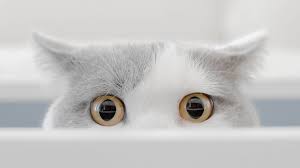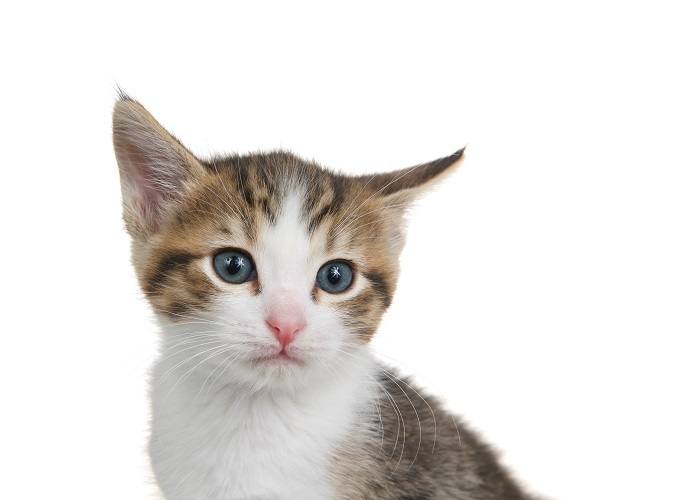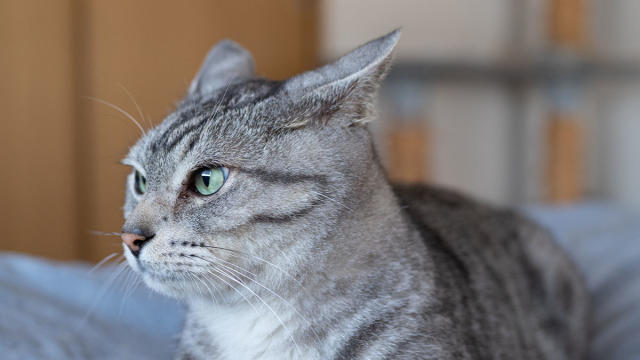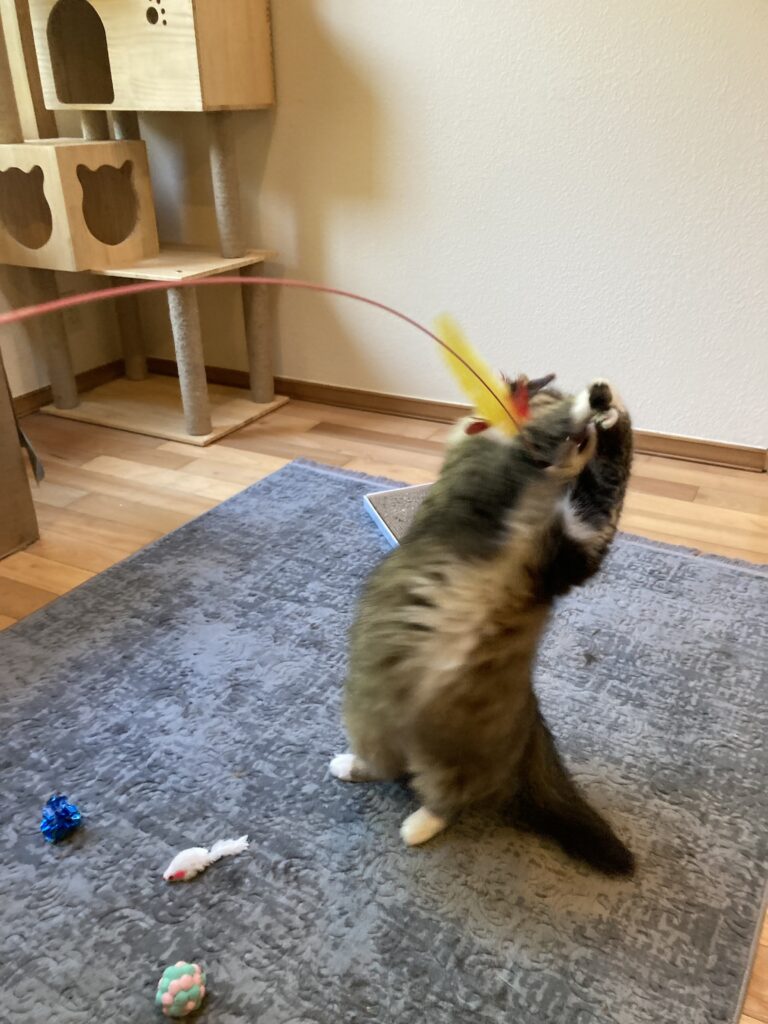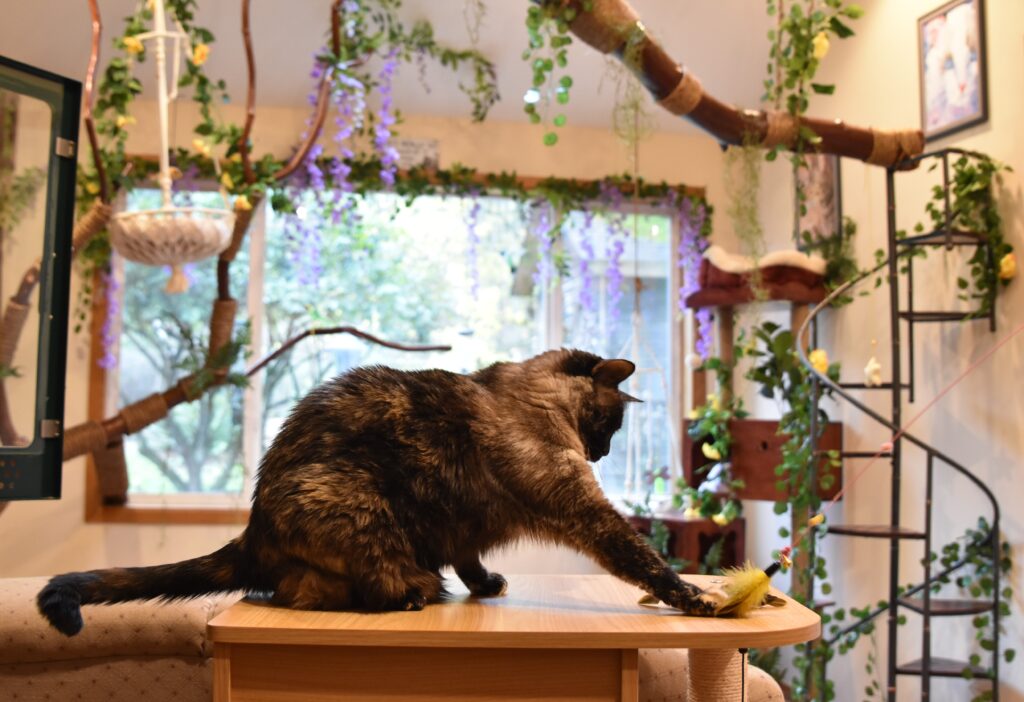
Such a sensual sounding word, and it really is. It is another word for cat whiskers. The very thing they use to “sense” the environment around them. Each whisker is equipped with tactile receptors that communicate both vibrations and touch. They can detect a breath of air, they are so sensitive. This can help them find prey by just movement. They are so important to a cat that they are the first hairs to develop before birth. They are longer and thicker than other hairs and reach much deeper under the skin where they are in contact with nerves.
While cats do have eyebrow and chin whiskers, it is the movement of the muzzle whiskers that communicate a cat’s mood. They can indicate anything from interest to fear to even pain.
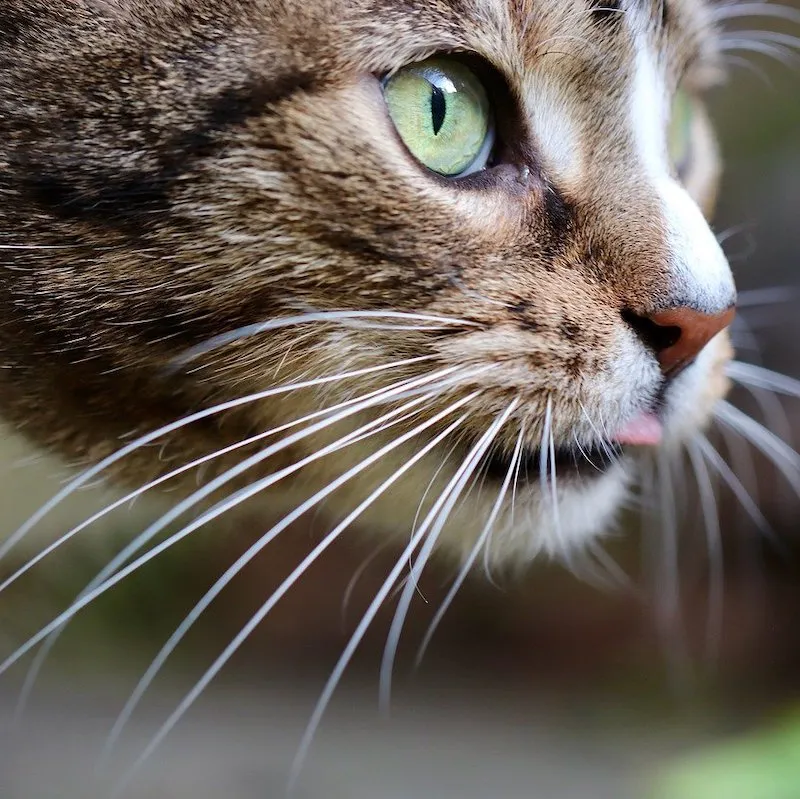
A relaxed friendly cat will have whiskers just slightly to the side.
An interested cat will have her whiskers perked forward and spread out. This can also be an indication of a hunting cat.
An anxious or stressed cat will hold her whiskers slightly back, with increasing fear she will pull them back closer to her cheeks.
Whiskers pulled tightly back to the face, along with the ears, are a sign of defensive (fearful) aggression as par of the attempt to get smaller and protective of herself, and a cat will show offensive aggressive by pushing both the ears and whiskers forward much the same as hunting.
Cat’s tend to be very stoic when it comes to pain. Being the prey animals that they are, it is best to hide your weakness from predators. But whiskers pushed forward can be an indicator of pain.
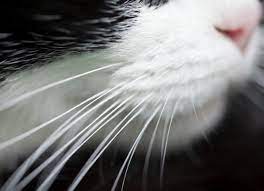
Cats can get “whisker fatigue” which means they get worn out by just feeling too much. Kind of the same way I get at the end of a long day and it feels like everyone is talking much more loudly. This may be why your cat does not like to eat or drink out of a deep bowl. It is always a good idea to provide something shallow, just to increase the wellbeing of your cat.
Never cut your cat’s whiskers, this can impair their ability to navigate the world around them and can be painful. This goes for pulling whiskers too.


